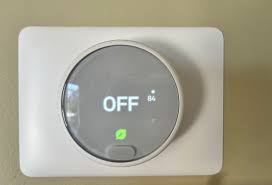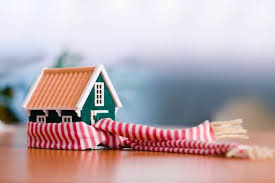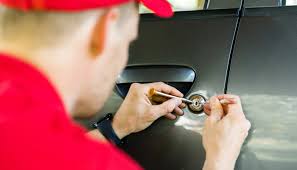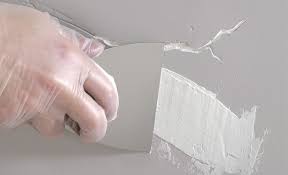How XRF Testing Works: A Guide for NYC Homeowners and Contractors
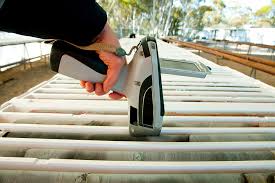
XRF testing NYC is a term every property owner, contractor, or real estate investor should be familiar with—especially if dealing with older buildings. New York City is home to thousands of residential properties built before 1978, a time when lead-based paint was commonly used. Today, lead poses a significant health hazard, particularly to children and pregnant women, and the city has enacted strict rules under Local Law 1 of 2004 to address the risk. At the heart of these regulations is the need to detect lead paint quickly, accurately, and non-destructively—and that’s where XRF (X-ray fluorescence) testing comes in.
XRF testing is the gold standard for lead detection in painted surfaces. It's a non-invasive, efficient, and legally recognized method used by certified inspectors to assess whether lead hazards are present. This article will explore how XRF testing works, why it’s critical for NYC properties, what the process involves, and how homeowners and contractors can prepare for compliance.
Understanding the Basics of XRF Technology
What Is XRF Testing?
XRF stands for X-ray fluorescence. It’s a scientific technique used to determine the elemental composition of materials. In the context of lead paint inspections, an XRF analyzer is a handheld device that emits low-level X-rays into a painted surface. When the X-rays hit the surface, the elements in the paint emit their own fluorescent X-rays back to the detector, which identifies the presence and concentration of lead.
This method is extremely effective because it allows inspectors to “see through” multiple layers of paint without damaging walls, doors, or window sills. Even if lead is buried under several layers of newer paint, the XRF analyzer can detect it.
Why XRF Is Preferred Over Lab Testing
Unlike traditional lab-based lead testing—which involves physically scraping off paint samples and sending them to a laboratory—XRF testing provides instant results onsite. It is faster, safer, and far more convenient for occupied residences. Additionally, NYC regulations favor XRF due to its reliability and the ability to quickly test multiple surfaces across a building.
The Role of XRF Testing in NYC Lead Laws
Local Law 1 Compliance
Under Local Law 1 of 2004, all landlords in NYC must identify and remediate lead paint hazards in apartments where a child under six lives. In 2021, amendments required full inspection of all dwelling units in applicable buildings by August 2025, regardless of tenant age. These laws assume that any building constructed before 1960 contains lead paint unless proven otherwise through proper testing methods.
Legal Acceptance of XRF Testing in NYC
XRF testing NYC is the only method officially recognized by the NYC Department of Housing Preservation and Development (HPD) and the Environmental Protection Agency (EPA) for determining the presence of lead paint without destructive sampling. It is the cornerstone of legal compliance for property owners who want to avoid violations and liability issues.
How the XRF Inspection Process Works
Step 1: Hiring a Certified Lead Inspector
Only an EPA-certified risk assessor or inspector-technician trained in XRF equipment may legally perform lead inspections in NYC. Homeowners and contractors must verify credentials before allowing any testing to occur.
Step 2: Pre-Inspection Planning
Before the inspection, the certified professional will discuss the building’s construction date, renovation history, and occupancy details. The inspector may create a room-by-room testing plan to ensure every painted surface is checked, including walls, baseboards, window sills, doors, and trim.
Step 3: Conducting the XRF Scan
During the actual inspection, the XRF analyzer is pressed firmly against each surface. In less than three seconds, the device emits X-rays and collects the returning fluorescence. The built-in computer instantly calculates the amount of lead in milligrams per square centimeter (mg/cm²). A reading above 1.0 mg/cm² typically indicates the presence of lead-based paint, triggering required remediation actions under NYC law.
Inspectors usually wear protective vests or use barriers, although the radiation exposure is minimal and considered safe. Surfaces are not damaged during this process, making it ideal for both occupied and vacant units.
Interpreting the Results of XRF Testing
What the Readings Mean
The analyzer provides three possible readings: “Positive,” “Negative,” or “Inconclusive.” A “Positive” reading means lead levels are above the action threshold and must be addressed. A “Negative” reading means the surface is safe. “Inconclusive” results may require further testing through dust wipes or lab analysis.
The report will list every surface tested and its respective result. This document becomes part of the property’s compliance records and must be maintained for at least 10 years by landlords.
Follow-Up Actions After a Positive Result
If the test detects lead-based paint, landlords or contractors must hire EPA-certified abatement professionals to either encapsulate, remove, or replace the affected materials. After work is completed, a clearance test is conducted to verify that lead dust has not contaminated the unit.
XRF Testing for Renovations and Contractor Projects
When Renovation Triggers Lead Testing
Even if no children are living in the home, renovations in pre-1978 buildings can disturb old lead paint layers. Contractors planning to sand, cut, or demolish painted surfaces are legally required to perform a lead test beforehand. XRF is often used to confirm whether those areas contain lead so that proper safety measures, such as containment and HEPA filtration, can be implemented.
RRP Rule Compliance
The EPA's Renovation, Repair, and Painting (RRP) Rule mandates that contractors working on homes or child-occupied facilities built before 1978 be trained and certified to handle lead safely. XRF testing helps these professionals meet compliance and avoid fines.
How Homeowners Can Prepare for an XRF Inspection
What to Expect
The inspection typically lasts between 1 to 3 hours depending on the size of the property. Homeowners should ensure that all painted surfaces are accessible and not blocked by heavy furniture or wall hangings. Children and pets should be kept away from the work area during the inspection.
You don’t need to vacate the premises, but you should expect light disruption. It’s helpful to share any renovation records or previous test results with the inspector in advance to reduce redundant testing.
Cost Considerations
XRF testing in NYC generally costs between $400 to $900 per unit, depending on square footage and the number of surfaces tested. While it may seem like a significant expense, it’s much cheaper than the fines for non-compliance or the health consequences of undetected lead exposure.
Common Myths About XRF Testing Debunked
Myth 1: XRF Is Dangerous Due to Radiation
XRF analyzers do use X-rays, but the radiation levels are extremely low—comparable to what you receive during a short airplane flight. The devices are safe for residential use and are operated only by certified professionals trained in proper safety protocols.
Myth 2: Visual Inspections Are Just as Good
A visual inspection alone cannot detect hidden lead beneath new paint layers. XRF testing is the only way to accurately determine the presence of lead without physically damaging the surface or relying on assumptions.
NYC’s Vision: Reducing Lead Exposure Citywide
New York City has taken an aggressive stance on reducing lead exposure. The universal requirement for lead inspections by 2025, combined with free inspection services for eligible tenants, is part of a broader initiative to eliminate childhood lead poisoning. XRF testing plays a pivotal role in making this vision a reality by offering fast, accurate, and regulation-approved testing across all five boroughs.
Contractors, landlords, and homeowners are all part of this effort. By understanding how the technology works and when it’s required, these stakeholders can contribute to a healthier urban environment while staying on the right side of the law.
Conclusion
In a city filled with older buildings and layered paint jobs, XRF testing NYC is an essential tool for ensuring public health and staying compliant with local law. Whether you’re a homeowner preparing for a renovation, a landlord maintaining rental units, or a contractor bidding on a project, understanding the process and value of XRF testing can save you from serious legal and health consequences.
As New York continues its push toward a lead-safe future, embracing modern, efficient testing methods like XRF is not just a best practice—it’s a responsibility.
Note: IndiBlogHub features both user-submitted and editorial content. We do not verify third-party contributions. Read our Disclaimer and Privacy Policyfor details.



